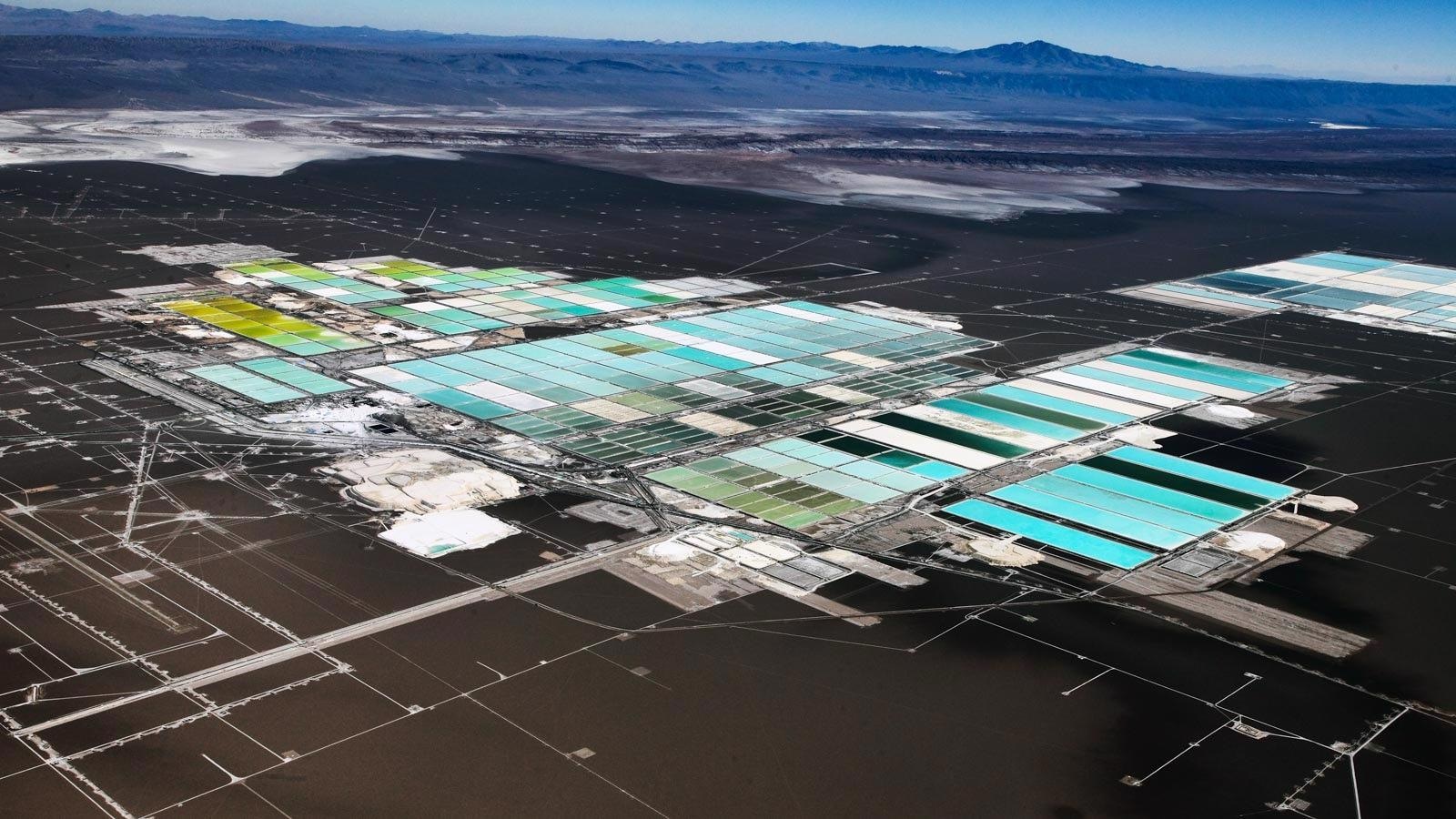A significant study carried out by scientists at the U.S. Department of Energy’s (DOE) Argonne National Laboratory provides a new understanding of the process of lithium production and its relation to long-lasting environmental sustainability.
 Evaporation ponds at SQM’s lithium mining site in the Salar de Atacama, in Chile. Image Credit: SQM.
Evaporation ponds at SQM’s lithium mining site in the Salar de Atacama, in Chile. Image Credit: SQM.
The new insights specifically relate to the field of transportation with electric vehicles and batteries.
The study titled “Energy, Greenhouse Gas, and Water Life Cycle Analysis of Lithium Carbonate and Lithium Hydroxide Monohydrate from Brine and Ore Resources and Their Use in Lithium Ion Battery Cathodes and Lithium Ion Batteries” was published in the Resources, Conservation & Recycling journal.
The research was the outcome of a unique collaboration with SQM, a Chilean company — one of the world’s largest producers of lithium.
Jarod Kelly, the lead author of the study and Argonne lifecycle analyst, stated that the scientists used operational data provided by SQM to identify that lithium sourcing from both location and processes heavily affects its associated environmental impacts.
The results show that concentrated lithium brine and its related end products can vary significantly in energy consumption, greenhouse gas emissions, sulfur dioxide emissions, and water consumption depending upon the resource allocation method used.
Jarod Kelly, Study Lead Author and Lifecycle Analyst, Argonne National Laboratory
Brine-based lithium extracted from the Salar de Atacama — a large salt flat in northern Chile close to the Andes Mountains — was modeled. The lithium was dried naturally in large ponds, the water was evaporated, the lithium was concentrated and impurities were eliminated.
Eventually, the scientists added materials and energy to develop lithium hydroxide and lithium carbonate. The end products produced are transported globally to battery cathode producers who process them into a range of battery materials.
The results can have significant implications in optimizing lithium production at every stage of the process, leading to better eco-friendly products, especially battery electric vehicles.
According to The International Energy Agency, the demand for lithium may increase as much as 40 times during 2020–2040, primarily as a result of the global deployment of electric vehicles.
Examination of current lithium production and the pursuit of future production, including from within the U.S., are critical to sustaining electric vehicle deployment.
Michael Wang, Study Co-Author and Director of the Systems Assessment Center, Argonne National Laboratory
“This study establishes a baseline for current practices and shows us potential areas for improvement. With further research, it will be possible to use this information to help develop best practices for producing lithium in the most sustainable way,” added Kelly.
Last year, Argonne was approached by SQM regarding collaboration in support of ambitious sustainability targets lately unraveled by the company.
According to our sustainability plan, we want to look more closely at carbon emissions, water consumption, and energy consumption in our lithium products, and see how it affects the rest of the value chain. This information will help us achieve our goal of being carbon neutral by 2030.
Veronica Gautier, Head of Innovation, SQM
Wang stated that the analysis could help answer the prominent question in the current global trend of electrification of transportation with battery electric vehicles.
Wang further added, “Often electrification is for the purpose of pursuing environmental sustainability. But we need to know more about lithium battery production before we can say we are truly on a sustainable path. This study provides crucial insights into the electric mobility value chain.”
The formal analysis employed Argonne’s open-source modeling tool, GREET (Greenhouse gases Regulated Emissions and Energy in Technologies), along with technical insight and elaborate data provided by SQM.
Besides the brine-based lithium extracted in Chile, the scientists augmented their data by modeling ore-based lithium extracted from spodumene ore in Western Australia.
According to Kelly, the analysis is the first-ever of its kind founded on comprehensive data from an industrial partner. Gautier noted that SQM was glad that the outcomes of the research are available publicly. SQM also intends to extend its support for global efforts toward assuring sustainable and responsible production of lithium.
“It is important for us to have full and complete transparency about how our process works, and we’re excited to leverage Argonne’s experience and expertise. Sharing this information will have great educational value,” concluded Gautier.
Journal Reference:
Kelly, J. C., et al. (2021) Energy, greenhouse gas, and water life cycle analysis of lithium carbonate and lithium hydroxide monohydrate from brine and ore resources and their use in lithium ion battery cathodes and lithium ion batteries. Resources, Conservation and Recycling. doi.org/10.1016/j.resconrec.2021.105762.